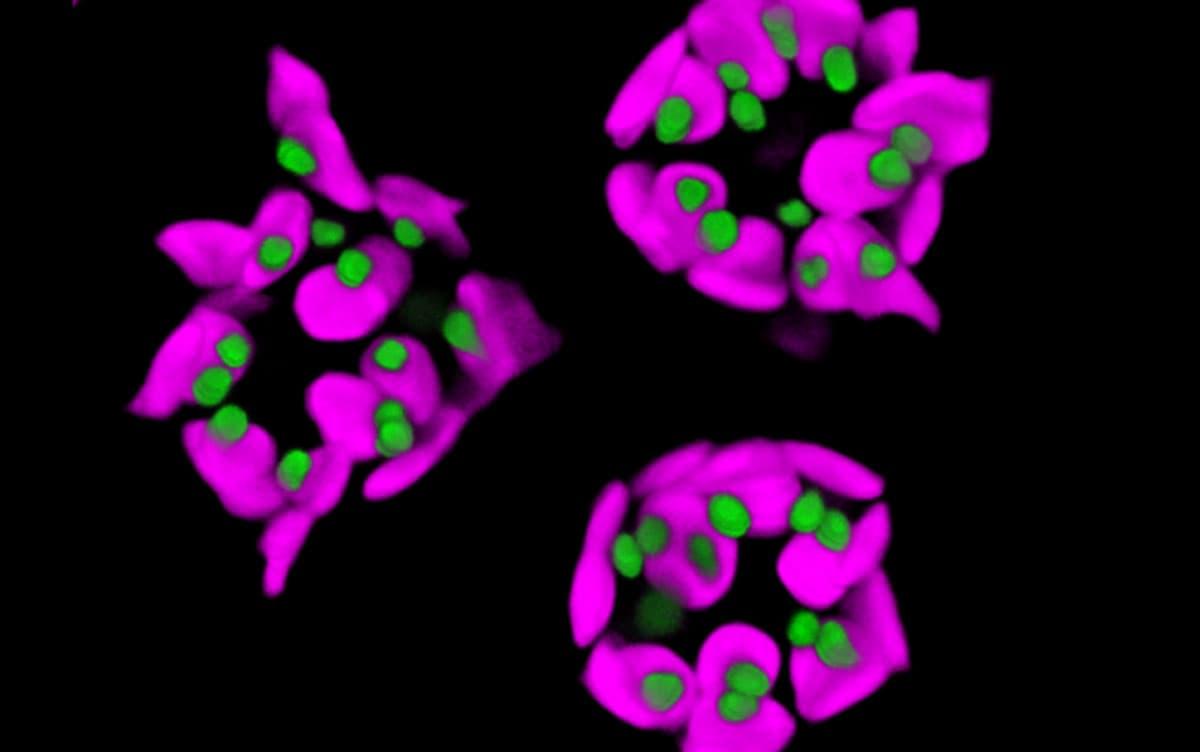Research News
Convergent Evolution of Algal CO2-Fixing Organelles

Researchers at the University of Tsukuba identified the proteins of a CO2-fixing organelle, namely, "pyrenoid," in the marine algal group Chlorarachniophyta and revealed various pyrenoid-associated proteins among algal groups, suggesting the independent evolution of pyrenoids in different algal groups.
Tsukuba, Japan—Plants and algae fix carbon through photosynthesis, which converts CO2 to organic carbon. This biological process is catalyzed by the Rubisco enzyme, the most abundant protein on Earth. In many algae, Rubisco is densely packed into a microcompartment called the pyrenoid, which plays an important role in the CO2 accumulation in aquatic environments. Notably, approximately one-third of global carbon fixation is estimated to occur within algal pyrenoids. Apart from Rubisco, the primary component of pyrenoids, the pyrenoid-associated proteins in most algae remain unclarified.
In this study, pyrenoid-associated proteins in a marine chlorarachniophyte alga were identified through a proteomic approach. Some of these proteins are apparently involved in pyrenoid construction and CO2 concentration. Interestingly, various pyrenoid-associated proteins have been reported among the algae studied to date, suggesting that CO2-fixing organelles evolved independently in each algal group. This is an example of convergent evolution at the molecular level.
Genetic engineering of plants using algal genes is underway to increase the photosynthetic performance. The pyrenoid-associated proteins reported herein are a potential basis for improving crop productivity in the future.
###
This work was funded by the Japan Society for the Promotion of Science (JSPS) KAKENHI Grant Numbers 18K06358 and 21K06285, and by the Institute for Fermentation, Osaka (LA-2022-011).
Original Paper
- Title of original paper:
- Pyrenoid proteomics reveals independent evolution of CO2-concentrating organelle in chlorarachniophytes
- Journal:
- Proceedings of the National Academy of Sciences
- DOI:
- 10.1073/pnas.2318542121
Correspondence
Assistant Professor HIRAKAWA Yoshihisa
Institute of Life and Environmental Sciences, University of Tsukuba
Professor NAGASATO Chikako
Muroran Marine Station, Field Science Center for Northern Biosphere, Hokkaido University
Related Link
Institute of Life and Environmental Sciences




